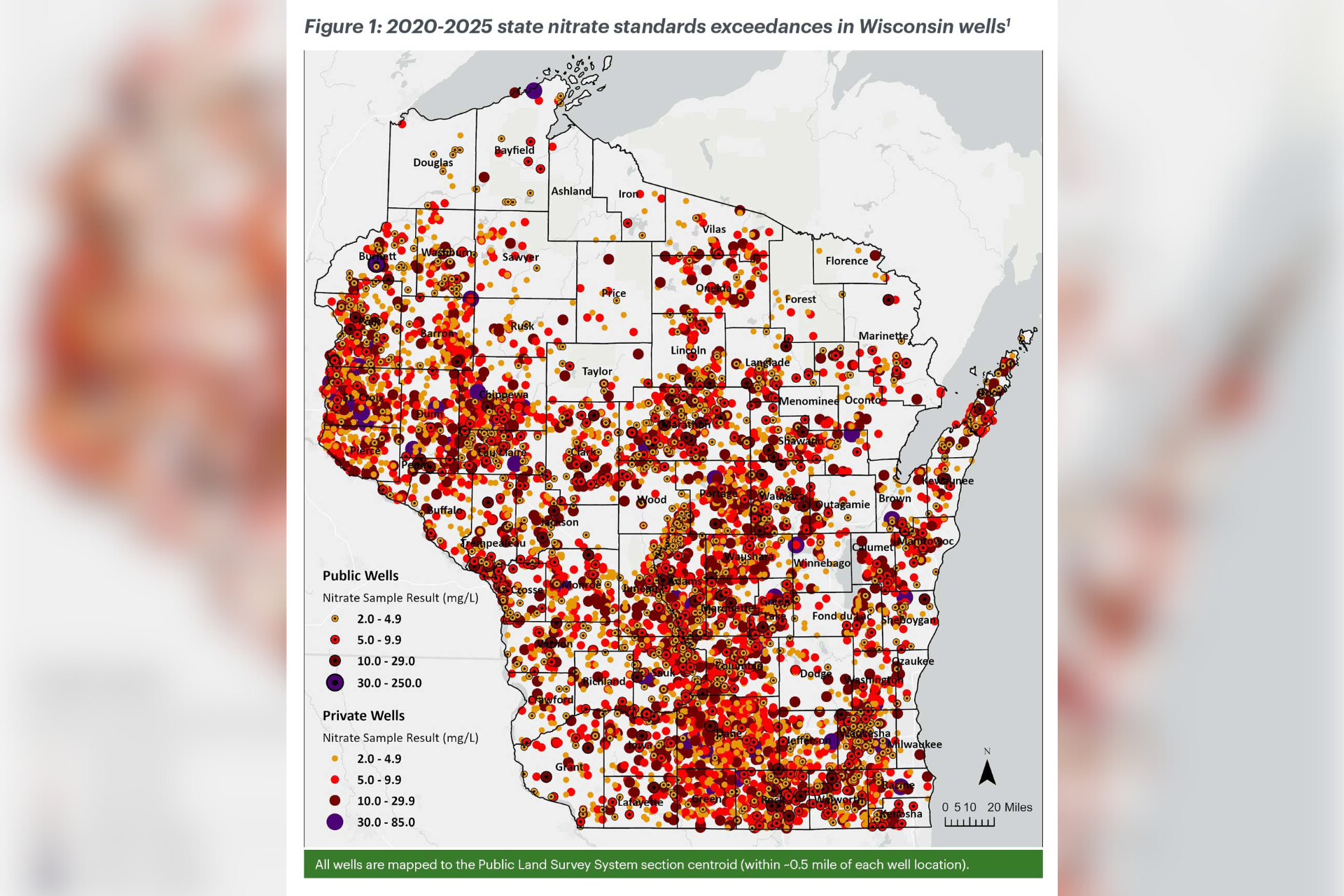This report examines the health, environmental, and financial consequences of nitrate contamination in Wisconsin’s drinking water, particularly from agricultural sources like manure and synthetic fertilizers. It presents current challenges, maps vulnerabilities, quantifies costs to municipal systems and private well owners, and proposes policy measures to reduce nitrate pollution.
Key Points
-
Agriculture Is the Dominant Source Of Nitrate Contamination: Over-application of nitrogen fertilizer and manure is a driving force behind contamination of Wisconsin’s groundwater.
-
Nitrate Contamination Imposes Large Costs And Health Risks: Municipalities face tremendous costs for infrastructure and water treatment needs while private well owners face expenses for filtration and well replacement. Health risks like cancer, birth complications, and “blue baby” syndrome pose other costs for public health.
-
Current Policies Aren’t Enough: Improved regulation, monitoring, enforcement, and financial mechanisms that shift responsibility toward pollution prevention rather than remediation are key to addressing worsening contamination.
Summary
Wisconsin faces a growing public health crisis caused by widespread nitrate contamination in our drinking water. Thousands of families in Wisconsin are paying the price with higher costs and serious health risks caused by nitrate pollution from fertilizer and manure infiltrating water supplies. Nitrate exposure is linked to serious health effects, including cancer, pregnancy complications, and infant methemoglobinemia, otherwise known as “blue baby” syndrome.
Nitrates on Tap: The Cost of Contamination in Wisconsin’s Drinking Water, co-authored by Clean Wisconsin and the Alliance for the Great Lakes, was published to inform concerned Wisconsinites, serve as a blueprint for how other states can analyze and address the issue, and highlight the need for more protective nitrate standards.
Important Takeaways
-
Nitrate Pollution Is Widespread And Worsening: Both surface and groundwater in Wisconsin increasingly exceed safe nitrate levels. Many private wells remain untested.
-
Public Health Implications Are Serious: Chronic exposure to moderate nitrate levels is linked to cancer (colorectal, thyroid, ovarian), pregnancy and birth complications, and the well-known “blue baby syndrome.”
-
Costs Are Borne By Water Users, Not Polluters: Municipalities have already spent over $40 million remediating nitrate, while private well owners face expensive replacements, filtration systems, or well drilling.
-
Agricultural Over-Application Is Quantifiable And Costly: The report’s mass balance approach estimates that in 2022, ~16 million pounds of nitrogen were applied beyond crop needs, costing farmers $8–11 million.
-
Policy Reform Is Urgently Needed. The report puts forward short-, medium-, and long-term strategies — ranging from expanding well compensation to revising standards, mandatory monitoring, regulatory enforcement, and manure hauler registration — to address root causes rather than merely treating symptoms.
